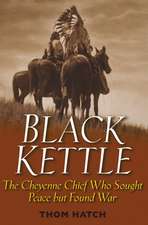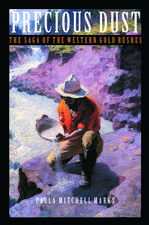Fort Meade and the Black Hills
Autor Robert Leeen Limba Engleză Paperback – 30 apr 1991
Fort Meade was the home of the famous Seventh Cavalry after its ignominious defeat in the Battle of the Little Bighorn. Troops from Fort Meade played a pivotal role in the events that led to the tragedy at Wounded Knee in 1890. It was the scene of imprisonment of Ute Indians who made the mistake of interpreting their new citizenship status as freedom from government control. The fort survived the mechanization of the horse cavalry, aided the record-breaking Stratosphere Balloon flight of 1935, and became a training site for the nation’s first airborne troops.
Fort Meade existed for sixty-six years, from 1878 to 1944. Robert Lee examines the strategic importance of its location on the northern edge of the Black Hills and the role it played in the settlement of the region, as well as the role played by the citizens of Sturgis in keeping it alive. One of the chief delights of Fort Meade and the Black Hills is a gallery of characters including the unfortunate Major Marcus Reno, the beautiful and fatal Ella Sturgis, and the cigar-smoking Poker Alice Tubbs. They, and events scaled to their larger-than-life size, are part of this long overdue story of Fort Meade.
Preț: 129.09 lei
Nou
Puncte Express: 194
Preț estimativ în valută:
24.70€ • 25.86$ • 20.56£
24.70€ • 25.86$ • 20.56£
Carte disponibilă
Livrare economică 10-24 martie
Preluare comenzi: 021 569.72.76
Specificații
ISBN-13: 9780803279612
ISBN-10: 0803279612
Pagini: 321
Ilustrații: Illus., map
Dimensiuni: 150 x 250 x 15 mm
Greutate: 0.45 kg
Editura: BISON BOOKS
Colecția Bison Books
Locul publicării:United States
ISBN-10: 0803279612
Pagini: 321
Ilustrații: Illus., map
Dimensiuni: 150 x 250 x 15 mm
Greutate: 0.45 kg
Editura: BISON BOOKS
Colecția Bison Books
Locul publicării:United States
Notă biografică
Robert Lee has published several books and many articles on South Dakota’s history. Inducted into the South Dakota Hall of Fame in 1987, he was named its writer of the year in 1992.
Recenzii
"First class account."—Idaho Yesterdays
"Especially relevant today because the author, besides giving careful consideration to context and place, explores the problems of racial isolation and integration, and the use of violence as a means of redress."—Western Historical Quarterly
"An exciting and wide-ranging history"—South Dakota Magazine














